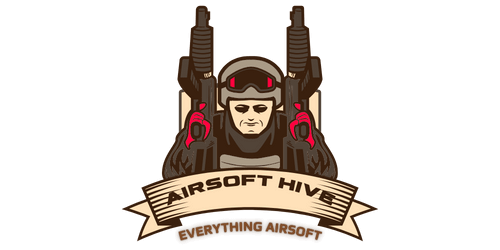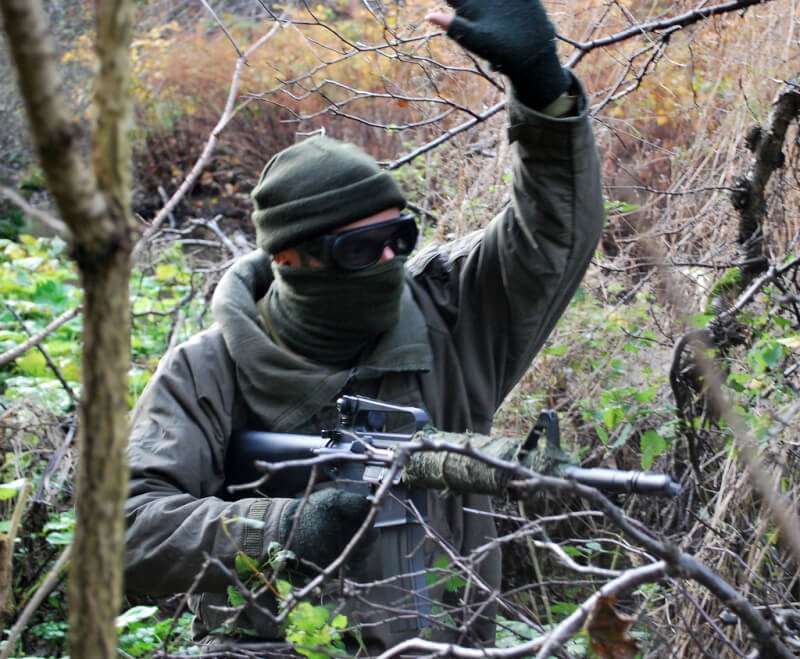In the thrilling world of Airsoft, effective communication and coordination with your team can mean the difference between victory and defeat. When words cannot be heard over the chaos of battle, enter hand signals – the secret language that bridges the gap. With a simple gesture, you can signal your team members, convey important information, and execute strategical movements seamlessly. This article delves into the art of using hand signals in Airsoft, providing essential tips and techniques to enhance your teamwork and dominate the field. Get ready to take your Airsoft game to the next level with the power of nonverbal communication!
The Importance of Effective Communication in Airsoft
Effective communication is an essential element in any team-based sport, and Airsoft is no exception. In the heat of battle, clear and concise communication can make all the difference between victory and defeat. When you’re in the midst of a fast-paced Airsoft game, being able to effectively convey important information to your teammates is crucial for successful teamwork and coordination.
Commonly Used Hand Signals in Airsoft
In situations where verbal communication may not be possible, such as when you need to maintain stealth or when the noise levels are too high, hand signals can be a highly effective method of communication. Understanding and using hand signals can greatly enhance communication and coordination among Airsoft players.
Silent Communication Signals
Silent communication signals play a vital role in relaying essential information without alerting opponents. These nonverbal signals can be quickly understood by your teammates, ensuring that they are aware of the situation without compromising your position. Some of the most commonly used silent communication signals in Airsoft include:
- Fist: The fist signal is used to communicate “Stop” or “Halt.” By holding your fist up, you can notify your teammates to stop immediately.
- Open hand: An open hand signal indicates “Move forward.” This gesture is particularly useful when you want your team to advance without making any noise.
- Hand wave: Waving your hand backward conveys the message “Move backward.” This gesture is helpful when you need to retreat or reposition your team.
- Index finger pointing: Pointing your index finger in a specific direction signals your teammates to pay attention or look in that direction. This can be used to identify a potential threat or indicate an objective.
Movement Signals
Communication in Airsoft is not only about conveying information but also about coordinating movement. By using hand signals to communicate movement instructions, you can prevent team members from getting separated or confused. Some of the most commonly used movement signals in Airsoft include:
- Closed fist: A closed fist signal means “Stay in position.” This gesture is crucial when you want your team to hold their ground and maintain their current positions.
- Flat palm facing forward: Extending your palm forward indicates “Advance.” It’s a clear and concise way to communicate to your teammates that it’s time to move forward.
- Arm extended sideways with palm down: Moving your arm to the side with your palm facing down signifies “Move to the side.” This gesture is useful when you want your team to shift their position laterally.
- Arm pointing towards a specific direction: Pointing your arm towards a specific direction communicates “Move in that direction.” This signal is ideal for guiding your team towards a specific objective or flank.

Cover and Close Quarter Combat (CQB) Signals
Close quarter combat situations in Airsoft can be intense and chaotic, often making verbal communication impractical. In such scenarios, hand signals become crucial for effective coordination. Some of the most commonly used cover and CQB signals in Airsoft include:
- Fist with thumb up: Holding your fist with your thumb up signifies “Ready to breach.” This signal is used to indicate that you are prepared to enter a room or breach a target.
- Fist with thumb down: Conversely, a fist with your thumb down communicates “Hold position” or “Wait.” This signal is particularly important when you need your team to hold their ground or wait for further instructions.
- Tapping the head with a closed fist: By tapping your head with a closed fist, you can convey the message “Enemy spotted” or “Cover me.” This signal alerts your teammates to provide you with cover while you engage with the enemy.
- Hands crossed at wrists: Crossing your hands at the wrists signals “Cease fire.” This is a crucial gesture to use when you need to halt all firing and prevent friendly fire incidents.
Benefits of Using Hand Signals in Airsoft
The use of hand signals in Airsoft offers several advantages that can enhance your gameplay and overall experience:
Enhanced Stealth and Tactical Advantage
One of the primary benefits of using hand signals in Airsoft is the enhanced stealth they provide. By using silent communication signals, you can relay information without alerting your opponents to your actions. This allows for a higher level of surprise and tactical advantage over the opposing team.
Clear Communication in Noisy Environments
Airsoft games often take place in environments with high levels of noise, such as dense forests or urban areas. In such situations, verbal communication can be easily drowned out, making hand signals a more reliable and efficient method of communication. Clear hand signals cut through the noise and ensure that your message is received accurately by your teammates.
Less Dependence on Verbal Communication
Verbal communication can be limited in Airsoft, especially when you need to maintain stealth or when the noise levels are high. By relying on hand signals, you can reduce your dependence on verbal communication and minimize the risk of giving away your position to the opposing team. This allows for more effective coordination without compromising your tactical advantage.
Improved Speed and Efficiency of Actions
Hand signals are quick and easily understood, allowing for a faster and more efficient execution of actions. Instead of relying on lengthy verbal instructions or waiting for confirmation, using hand signals enables your team to react swiftly to changing circumstances. This improved speed and efficiency can give you a competitive edge on the field.
Training and Familiarization with Hand Signals
To fully benefit from the use of hand signals in Airsoft, it’s essential to dedicate time to training and becoming familiar with different signals. Regular practice and drills can help you and your team develop a shared understanding of the hand signals and their respective meanings. Additionally, teams can create their own set of hand signals based on their specific needs and preferences, allowing for a more cohesive and effective communication system.
Various resources, such as online tutorials and books, can also aid in learning and mastering hand signals. These materials provide visual examples and explanations that can help you become proficient in using hand signals effectively during Airsoft games.
Challenges and Considerations
While hand signals can greatly improve communication and coordination in Airsoft, there are a few challenges and considerations to keep in mind:
Misinterpretation of Signals
In the chaos of an Airsoft game, there is a possibility of misinterpreting hand signals. It’s crucial to ensure that all team members are familiar with the signals and understand their meanings to minimize the risk of confusion or misunderstanding. Regular training and practice can help mitigate this challenge and ensure that everyone is on the same page.
Need for Standardized Signals
To avoid confusion and miscommunication between teams, it’s important to establish standardized hand signals that are widely understood and recognized within the Airsoft community. This standardization can help promote effective communication between players from different teams or even different countries, enhancing the overall Airsoft experience.
Accounting for Unseen or Unfamiliar Signals
While training and familiarization with common hand signals are essential, it’s impossible to anticipate every possible signal that may be encountered during an Airsoft game. It’s crucial to have a flexible mindset and adapt to unfamiliar signals by using quick thinking, observation, and context clues. Clear communication within the team is vital in such situations to avoid unnecessary confusion or mistakes.

Conclusion
Effective communication and coordination are fundamental to success in Airsoft. Incorporating hand signals into your gameplay can significantly enhance your ability to relay essential information and coordinate actions with your teammates. Through regular training and familiarization with hand signals, you can improve your communication efficiency and tactical advantage on the field. So, next time you play Airsoft, remember the power of hand signals and the impact they can have on your team’s success.


